OFweek smart home network news CES has always been an international manufacturer to pass on the window of the future lifestyle to consumers, and this also became a great opportunity for larger SMEs to release new products.
When CES was expanded to Shanghai from Las Vegas in the United States, Asian companies flocked to face this world-class booth. The heat of CES Asia 2017 has not yet dissipated, and the future technology lifestyle has been pushed to our eyes. What kind of future is it presented to us this time?

As the media partner of this CES Asia 2017, Titanium Media has for the first time moved the famous lifestyle and geek brand “Titanium Cabin†to this CES Asia site, while our interactive experience, live broadcasting and the car reporting team are A three-day report was conducted on site.
Not much innovation, but closer to life
Initially, CES existed as an electronic consumer goods trading venue, and the most popular products at that time were naturally electronic products such as tapes, radios, and televisions. In order to increase brand awareness, there has never been a shortage of gimmicks since the beginning of the exhibition. In the absence of products in the 1960s, stunt shows became an important aspect of attracting audiences to visit. As far as an electronic consumer show is concerned, the most attractive one should be electronic products. However, at the electronic consumer show this year, there are not many dazzling products. Instead, these products are close enough to consumers, just like smartphones that have "evolved" year after year.
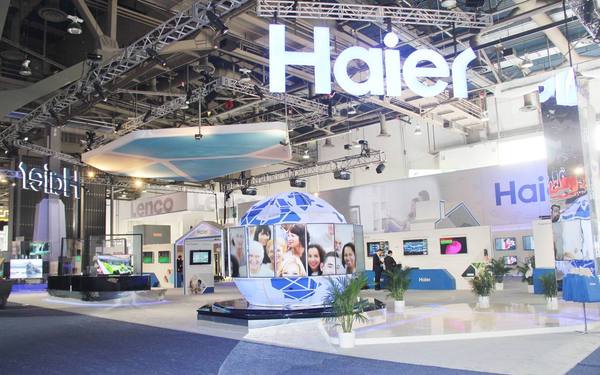
This year's CES, the highest rate of appearance on the stand is a "smart home," and major traditional home appliance makers have not forgotten to display their own smart home appliance systems. Haier, for example, has demonstrated several aspects including its excellent home ecology, smart community, smart kitchen, smart bedroom and smart bathroom. In Haier's home ecology, Haier provides a complete range of products, from the underlying chips and modules to the UHomeOS operating system, to end products that cover several scenarios such as bedrooms, bathrooms, living rooms, security, and communities, such as smart refrigerators. , Smart lights, smart toilets, smart speakers, smart door locks, cameras, gateways, etc., Haier wants to build a smart home "eco-empire." According to Haier's data, the equipment currently connected to the Haier ecosystem has exceeded 50 million units.

Haier Smart Home Ecosystem
Changhong, which has a military background, is also quietly deploying smart homes. At present, Changhong's products mainly include smart TVs, refrigerators, air conditioners, curtains, door locks, smart lights and more than a dozen products, self-built software platform and cloud platform, using independent private The standard, which integrates home appliances and services on a television screen, can now be controlled by the voice of a remote controller.
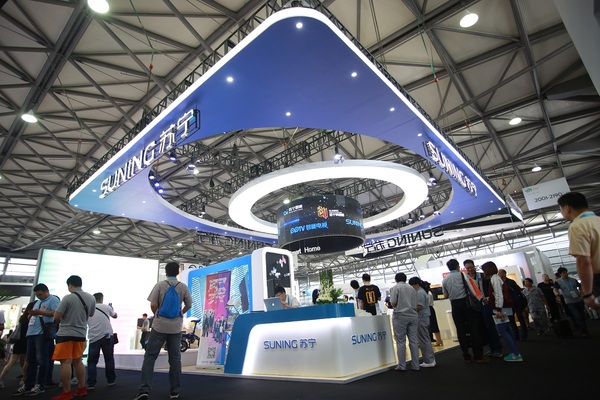
Suning "Wisdom Life" exhibition area
Suning's smart home and Suning US Silicon Valley Institute team displayed intelligent products such as smart curtains, smart cabinet air conditioners, intelligent lighting control, smart security camera, tango, and AR Hololens in the "Suning House Intelligence". Show users their "Smart Life" solution.
In addition to the traditional home appliance companies, Suning Jingdong such as e-commerce brands, as well as operators such as China Mobile, Harman Kardon such hardware manufacturers in the admission, of course, there is no lack of various program manufacturers.
The biggest problem facing home appliance manufacturers now is that they have hardware, but they lack the Internet "gene." Of course, it is undeniable that the risk of rushing into the wild land of smart homes is too risky for large companies. Now that the future of "smart homes" is approaching, it may be too late to leave the car again.
For e-commerce companies and operators, they have a lot of data, and they naturally have advantages in building open platforms, but hardware manufacturing does not have an advantage. However, Amazon's success in the Echo smart speaker has attracted many platform vendors who are not involved in hardware manufacturing, such as Jingdong. At the same time, it also caused a lot of non-home appliance hardware manufacturers: Apple HomePod released in the past WWDC, apparently is directed at the smart home.
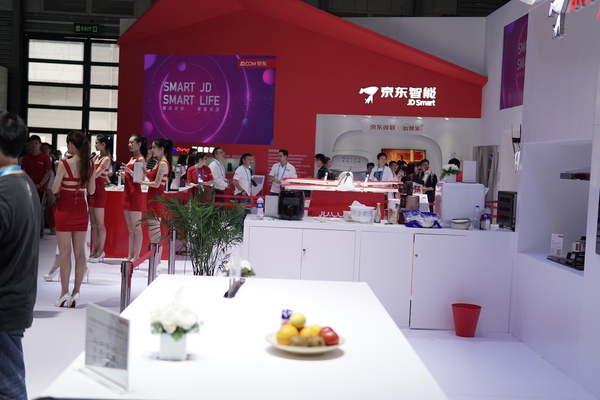
Jingdong Intelligence
Judging from this exhibition, smart homes are now beginning to take shape, at least not as simple as using the App control device switch. Now smart speakers have become the center of family interaction. Currently, there is no big problem in smart hardware. What is missing is a platform that can carry them. This is the direction that all vendors are trying to make, and they are trying to keep user data in their own platform. The question is how to build a data platform with a certain amount of users in the next few years, or develop an industry-accepted standard. Smart homes are gradually entering the lives of ordinary people.
VR heat drops, AR heat rises
In the past two years, VR is the most popular hardware at the show. The users waiting in line for the experience are always the most, and this year is no exception. Different from previous years, this time exhibitors did not go back to the past - at least not alone for the VR manufacturers to open up a venue alone, they "fade to the world" scattered in various venues. Among them, there are manufacturers such as Goethe Acoustics, and there are also AMOLED screen providers such as Hefei Optoelectronics, as well as VR equipment vendors such as Antvision, DaPin, Pico and others.

NOLO Trace Kit
Of course, these VR devices have not been as demo level as last year. Most of them already have quite a lot of VR content. Consumer-grade VR devices already have many compatible games, and there are also cases where VR devices are used in specific industries. However, the hotter in the exhibition area is the AR type product.
Most of the current AR products are similar to the Google Glass Prism design. The biggest advantage of this design solution is that it is cheap, easy to popularize, its disadvantages are obvious, the display is poor, and the FOV is small. Of course, the major debuts at CES are semi-transflective reflectance, or an upgraded version of free-form surface prisms. A few optical waveguide solutions and the only one in the entire audience use the Video See Through solution.
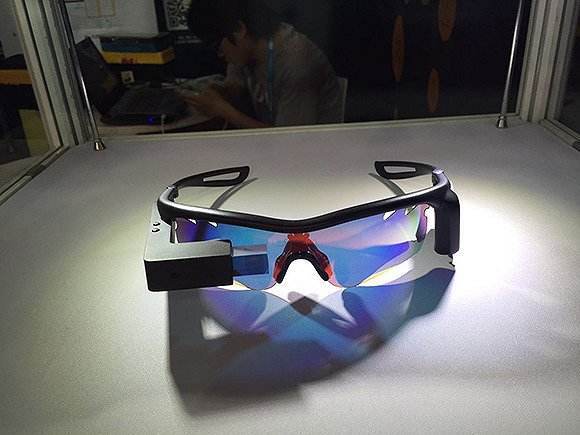
Prism AR glasses
Compared to the past, this AR product finally has a reasonable product form, at least no longer a monocular display, but also toward the "small and beautiful" form. Most of them have the same appearance as glasses, but they can also display images in front of them.
For the first time experience, this "unprecedented" display is really attractive. Some manufacturers will also use the slogan “HoloLens†to claim that their FOV is much larger than the HoloLens of 30° FOV. On the display side alone, it is true that many programs are much better than HoloLens (sufficiently enough to see the hard work of these manufacturers under the Demo side).
However, in all AR products that titanium media reporters have experienced, they apparently lack a critical link—positioning and interaction—and this is where HoloLens exceeds other devices by far.
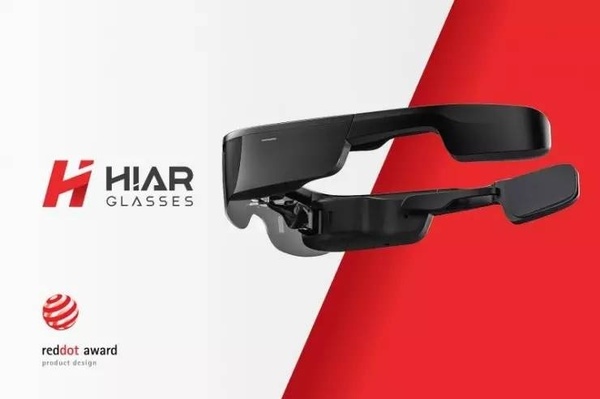
Bright wind table AR glasses
HoloLens uses SLAM (Simultaneous Localization and Mapping) positioning technology to identify real-world objects without any marker points. At the same time, the experiencer can also control and interact with gestures. Currently, HoloLens has many applications and applications available. game. None of the AR equipment at the show was able to achieve this. Some of them could only play video pictures, and some of them could barely realize positioning in space with some markers. However, who will use the AR device to put a mark at home? At present, these devices at the show brought surprises to titanium media reporters. At the same time, some AR devices have already had industrial applications, such as home improvement, but the distance has really penetrated into the lives of ordinary consumers and has even become A generation of personal computing devices still needs a long way to go.
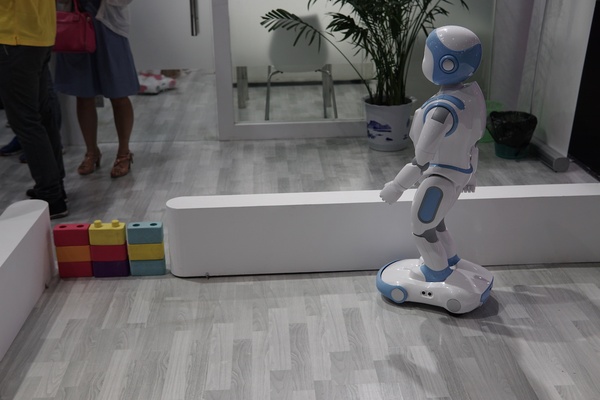
Robots at CES
"Under the sky", where can see the drone
In addition to smart homes, VR/AR, all kinds of interesting peripherals are also a highlight of this exhibition. For example, a drone named AirSelfie. It is extremely compact and can even be placed in a mobile phone case. It weighs only 61g and is quite lightweight. The maximum flying height is up to 20m. AirSelfie has a built-in 5 megapixel camera that supports up to 1080p/30fps video. AirSelfie is connected to the mobile phone via wifi and uses the gravity sensing device of the mobile phone for control. Take off the aircraft and put it gently on the palm. Take a light toss. The visual sensing system is designed at the bottom of the fuselage to maintain a stable hovering at fixed points. .
However, because the volume is too small, the built-in battery capacity is limited, AirSelfie's battery life is only a poor 3 minutes, and its charging is carried out through the phone shell, random standard iPhone 7 Plus phone shell, built-in battery, can extend the phone The battery life can also be charged for AirSelfie.
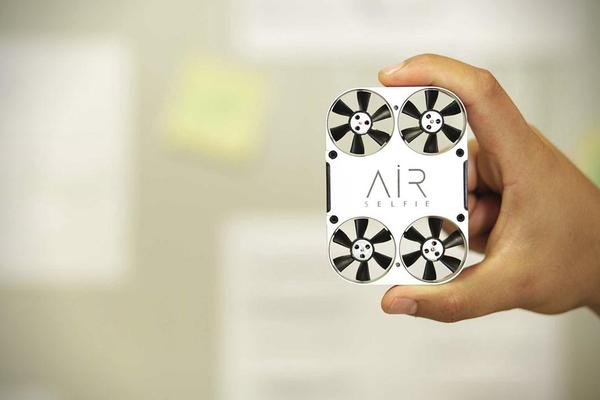
AirSelfie
The underwater "drone" - the FiFish P4 - also appeared on the CES. It uses a 1 inch 162° super wide-angle underwater lens designed to take pictures under dimly lit seawater. The FiFish P4 can be submerged up to 100m and can last for up to 4 hours and can reach 3 knots (about 5.5km/h). In addition, FiFish P4 realizes real-time video transmission. It can transmit images captured underwater to real-time mobile apps via a remote control and share them to social platforms with one click. Because it is connected to the remote controller through the cable, it can ensure the real-time transmission and stability of the signal.

FiFIsh P4
After the underwater shooting equipment is ready, the next thing that comes to mind is travel. The function of the robot trunk R1 introduced by COWAROBOT is very simple. It is to give the trolley action function. The trolley box is equipped with an obstacle avoidance system at the bottom. It can scan the surrounding environment and identify obstacles. This is equivalent to having "eyes" that can avoid obstacles. The reason why it can follow people everywhere is because the bottom is equipped with a driving wheel in addition to the four universal wheels. After the motor is driven, it will move. When you wear a matching wristband, it can accurately identify your position, just double-click the bracelet, no matter how fast or slow you go, what kind of obstacles on the road, it can easily follow you. In addition, when you are far (5m) away from the trunk, it will immediately alert you, and when you are too far away (30m), it will automatically open the above lock.
Accessories are also crazy
CES is naturally a perfect place for various gadget manufacturers to showcase their products: Among the exhibitors, there are mobile phone cases, such as UAG, OtterBox, etc. They drop mobile phones on the spot; they also have Monster headphones and electric guitars made by GIBSUY. Business, they even invited DJ, musicians live Live. However, there are also manufacturers of components: for example, instruments that use micro-current maintenance, including facial masks, anti-hair loss devices, and menstrual pain treatment devices.
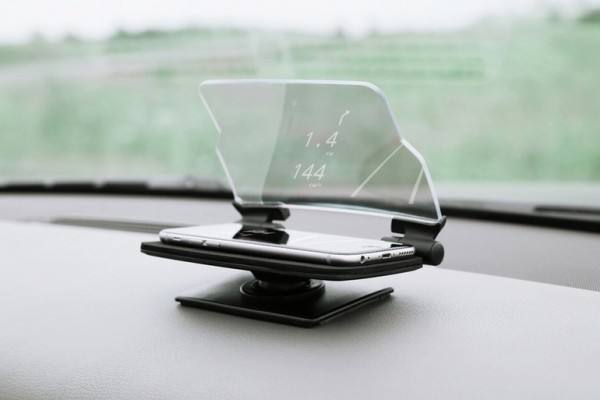
Hudway Glass
Of course, there are also some very innovative HUD (Head Up Display) manufacturers. For example, Hudway Glass, unlike other HUDs, does not have any electronic structure. It uses optical principles to refract the image on a mobile phone to a piece of glass. The information source comes from the mobile phone.
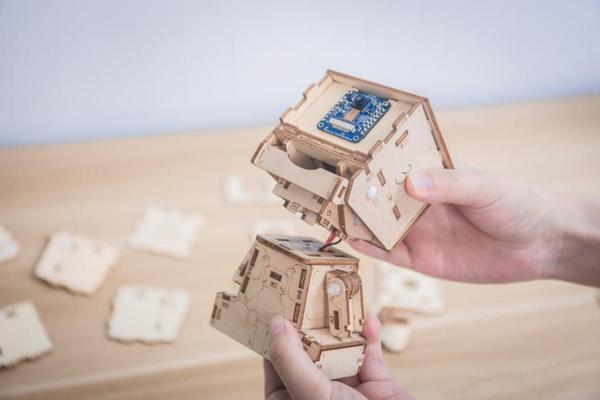
Small MU Space Robot
Unlike other large robots, the small MU space robot produced by Motuo Technology is much smaller in size. Its function is not to become the center of the family, it is a STEAM programming robot, built-in MU-Blockly modular programming, allowing children to learn programming while playing.
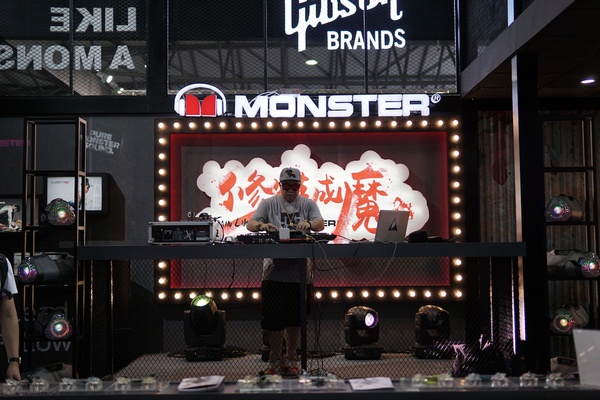
DJ at Monster
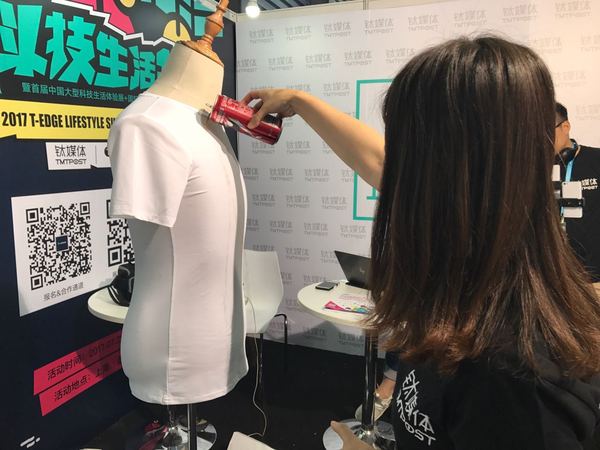
Waterproof T-shirt
Our titanium media also opened a booth at CES: Titanium Cabin. This is our booth to showcase a new technology lifestyle. We have presented a waterproof T-shirt – this is a piece of clothing that cannot be soaked with any liquids, is especially suitable for summer wear, and prevents sweat from soaking in the perspective of the clothing; no need for any fire. Source, small pot that can be carried around, more than 100 needles are unbreakable condoms ... and so on. Of course, the products in this exhibition area are only one of our titanium empty cabins. If readers are interested in these close-to-life technology products, they may wish to move to our “Titanium Empty†section where there are more interesting products waiting. You find it.
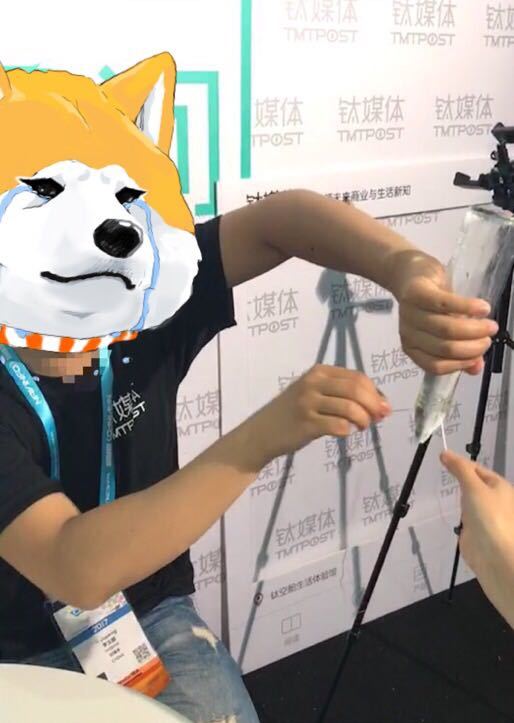
Unbreakable condom
Apart from VR/AR, these robots are the most popular exhibition areas in the stadium, but in reality, most of these types of robots belong to fresh equipment. The reporter believes that most of this type of equipment is a product of "the past high-tech decentralization and consumption levels," and it is a certain distance away from becoming the center of ordinary consumers' eyes. This is the CES Asia is nothing particularly exciting technology, but in any case these devices give us a glimpse of the future.
Guangdong Ojun Technology Co., Ltd. , https://www.ojunconnector.com